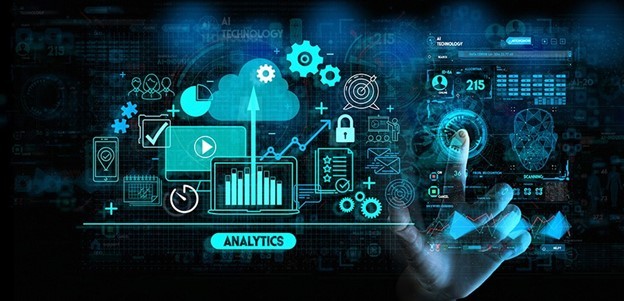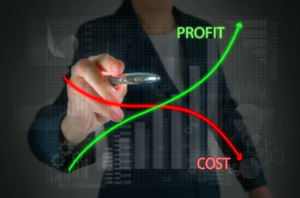Today, supply chains are wrestling with all sorts of supply chain constraints from silicon chips to metal shipping containers. For many senior procurement executives, managing shortages and supply continuity is their number one issue. With that, comes the criticality of knowing exactly how commodity teams are managing visibility into their continuity of supply, and having a response plan when things go awry. More advanced procurement squads have already put in place supply chain risk management techniques that peer several layers deep down to the details of their suppliers-of-suppliers-of-suppliers’ factories. But then what? Even with these advanced warning, solid supply chain risk management governance and process must take over. As supply plans change almost every hour, current build plans must be reconciled equally as fast. These build plans determine which customer orders the manufacturing team will prioritize for assembly during the coming week. Build schedules must not only comprehend THE latest in supply availability, but also considers other KPI’s such as customer on-time delivery expectations, product margin performance, and logistics constraints.
With only basic computer-automation tools, the digital-to-human transition comes early. In this case, much of the supply planning is done by team members, Excel spreadsheets, and time… a lot of time! The problem is that supply data changes so rapidly, that once the analysis is complete, the sub-tending data is already out of date. And so, the process must begin anew. For example, dedicated supply chain risk analysts are continually monitoring supply lines, alerting commodity managers of downstream yet-unknown impacts and being responsible for finding alternatives. Shortage management requires the ability to place orders the very minute a new supply source has been discovered. No time for escalations or delays. Here, since the digital endpoint and transition to human capital is operating close to ground level, the teams have to be adequately staffed and practiced for intense decision-velocity and constant adjustments.
Increasingly, new Artificial Intelligence that is augmented by Machine Learning (known collectively as A.I./M.L.), builds upon past success and mistakes and is extending the digital endpoint even further than thought imaginable as little as a year or two ago. If a human with good analytical skills can read an alert of pending shortage, why not use an artificial intelligence engine that can not only detect and analyze variances in micro-seconds, but can also send emails, track response, measure specific inventory levels both in-house and at distributors, and make budget-saving recommendations? Once trusted, they could even place immediate inventory orders. This technology is not only possible but is increasingly commercially available. A.I. / M.L. tools are being created by SaaS providers that add layers of capabilities that were formerly completed by humans. For example, commodity managers use to have to wait for emails or calls from their suppliers to know about supply disruptions and how their orders might be impacted. Now, Natural Language Processors (N.L.P.) troll the internet for possible supply-altering event. Once detected, the A.I. / M.L. robots go to work. They analyze the event for applicability to a product’s structured component list (Bill of Material), analyze the potential impact, provide recommendations, and can even launch emails between the company and their supplier to confirm an impact or not.
At a higher level, A.I. / M.L. is also stretching the CxO management reach beyond classic human grasp and well-faster than traditional “plan-do-check-act” speeds. “System of Systems” track thousands of KPI’s across hundreds of global corporate teams. They constantly collect precise data from a verified “source of truth”, and alert just the right leader when calculated outcomes seem to be vectoring away from an optimized result. These systems can, amongst other “what-ifs”, adjust operational plans as fresh data pours in. Inefficiencies in processes that pose a threat to revenue are identified, analyzed, and promptly averted, almost instantly. These systems are increasingly able to be in touch with a myriad of data sources and activity all at once, and keep management informed as it iterates constantly to ensure the intended business outcomes are on course. This uplifting of the digital endpoint allows management to move themselves higher on the Maslovian Hierarchy to more strategic decisions while the A.I. system keeps business chugging along toward an optimized result.
This investment in technology and the resulting rise of the digital endpoint not only saves time, but also addresses the increase challenges of finding skilled resources that know procurement / operations AND are skilled at data analytics. A difficult breed of professional, for sure. And if found, they will be in high demand in the marketplace. You may find yourself training and re-training for this same job function several times each year.
The trend is clear. Operational groups, procurement teams, and supply planners will have to get on board or be left behind. A good place to start is to have a clear understanding of upon who’s keyboard do your digital endpoints terminate, and by asking yourself honestly, “what happens next”? Give this role the ability to make quick decisions that is governed by a clear charter until ready to put in place complimentary smart technology that can move decision-making to even faster levels. In any case, the transition from digital to human must be extraordinarily efficient. Companies that master the connection between the human brain and automated systems will compete with lower costs, quicker speeds, and better operating performance. Assume your competitors have already started!
For more on this topic, please contact the author.
Joe Carson
VP Business Development, ExperienceFlow



